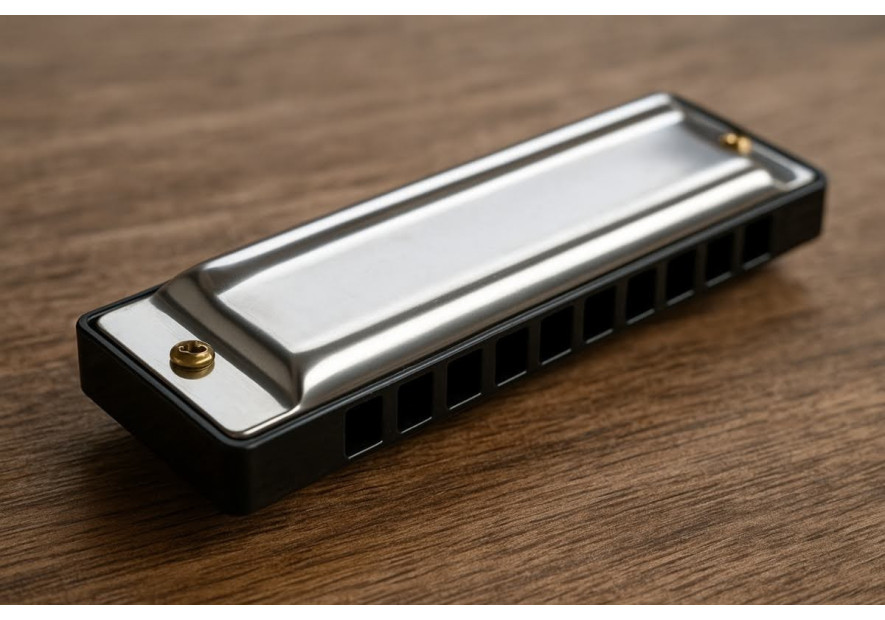How to Play Blues on Harmonica: 8 Essential Techniques & Tips

There’s something raw and soul-stirring about the sound of a blues harp. It bends and breathes emotion like few other instruments can.
Whether you’re standing on a back porch, jamming in a smoky bar, or just noodling on your own, playing blues on harmonica taps into a legacy that’s gritty, emotional, and deeply human.
But where do you start if you’re looking to not just make noise—but play the blues? Let’s break it down.
From a few beginner-friendly techniques to subtle tricks that seasoned players swear by, here’s how to give your harmonica that unmistakable bluesy voice.
#1 Choose the Right Harmonica (It’s Not Just a C Major Game)
While many beginners start with a diatonic harmonica in the key of C—and that’s fine—blues players often reach for a harmonica in a different key, depending on the song.
Most traditional blues tunes are in E or A, which means grabbing a harmonica in the key of A or D often gives you more stylistic room to stretch.
Also, don’t overlook build quality. Cheap harmonicas might squeak by for simple melodies, but blues demands precision and durability. Leaky reeds and poor response? That’s a fast track to frustration.
#2 Learn 2nd Position (Cross Harp)
Blues and 2nd position go together like whiskey and a dim-lit jukebox. In simple terms, second position—or “cross harp”—means playing in a key that’s a fourth above your harmonica’s key. So, if you’re holding a C harmonica, you’d be playing in G.
Why does this matter? Because the 2nd position unlocks the blues scale more naturally, giving you easier access to those expressive bends and gritty tones that define the genre.
First position tends to feel too “major,” too bright. Blues need that emotional pull—and second position gets you there fast.
#3 Master the Art of Bending Notes
Ah, bending—the magic sauce. For beginners, it’s often the biggest challenge to master. Without it, a blues solo sounds stiff. With it, even a single note can weep or growl.
Bending is the technique of subtly lowering the pitch of a note by altering your mouth shape, tongue position, and air pressure.
.jpg)
It’s not something you nail in one afternoon, but it’s the heartbeat of expressive blues playing.
Start with hole 4 draw. That’s usually the first bend-friendly note that responds well to practice. Then move on to hole 3 draw, where the magic deepens. Eventually, your ear will guide you—because bending isn’t about precision in pitch; it’s about feel.
Also, quick side note: if your harmonica doesn’t respond well to bends, it’s probably not you—it might just be time for an upgrade.
#4 Use a Dirty Tone (On Purpose)
This might sound a little counterintuitive, but in blues, a clean, pristine tone isn’talways the goal.
A slightly “dirty” sound—created by cupping your hands tightly around the harp and mic, or even letting a bit of your vocal cords buzz through—can add depth and attitude.
It gives the impression that the harmonica is growling, almost like a human voice caught mid-groan.
Experiment with hand effects, too. Wa-wa sounds, vibrato, or fluttering your fingers in front of the back of the harp can inject flavor that no amplifier can replicate. Blues isn’t polished—it’s personal.
#5 Keep Rhythm Like a Drummer
Blues harp players aren’t just soloists—they’re rhythm keepers. Especially in traditional 12-bar blues, your role might lean more toward accenting the groove rather than leading it.
Try this: set a slow shuffle beat and play a basic 1-2 rhythm on the lower holes using draw and blow patterns. Let your phrasing swing.
Don’t just chase speed; chase pocket. Some of the best blues solos feel like they’re slipping slightly behind the beat—that’s not a mistake; it’s the sauce.
#6 Improvise with the Blues Scale
Once you've got a grip on bending and second position, it's time to explore the blues scale—arguably the lifeblood of playing blues on harmonica. It includes the flat fifth, or the "blue note," which gives your licks that raw, soulful twist.
.jpg)
You don’t need to memorize it all right away. Instead, find a backing track in a comfortable key and experiment. Use holes 2 through 6 in draw and blow combinations, throw in some bends, and most importantly—listen.
Good improvisation isn't about throwing in a ton of notes; it's about choosing the right ones and leaving space for them to breathe.
#7 Practice Call and Response
Blues is conversation. Between you and your band. Between you and the crowd. Between your last lick and the next one.
Practicing “call and response” phrases—playing one phrase, then following it with a “response” phrase—helps you shape solos that say something.
Even if you’re playing solo, this back-and-forth dynamic brings structure and emotion to your playing. It’s not all fire and flash—it’s storytelling.
#8 Build Your Licks
Sure, learning classic blues licks from the masters is a great start—but eventually, you’ll want your voice. Record yourself. Play the same phrase three different ways. Take one bend and squeeze every bit of soul from it.
Truth is, playing blues on a harmonica isn’t about how many tricks you know. It’s about the sound you chase—and the feeling it gives you and your listeners. Don’t rush that. Let it unfold.
Bring Your Harmonica to Life with HARMO
At the end of the day, your technique matters—but so does your instrument. If you're serious about learning how to play blues on harmonica, you’ll want an instrument that’s built for dynamic tone, smooth bends, and long-lasting reliability.
That’s where HARMO shines. Crafted with care and tuned with precision, our top-quality blues harmonica models are made for players who want to feel, not just function.
So whether you’re learning your first blues bend or shaping a sound all your own, trust your gear to keep up with the journey. Let it sing, growl, and breathe right alongside you.
Contact us today, and we’ll help you find the perfect model for your signature blues sound!



Leave a comment